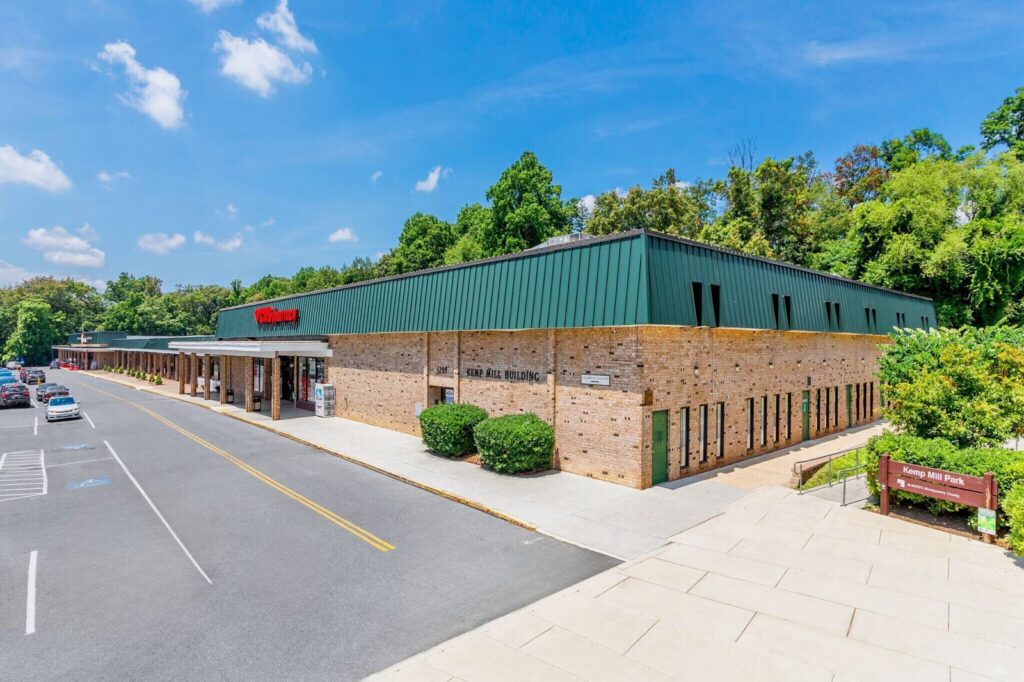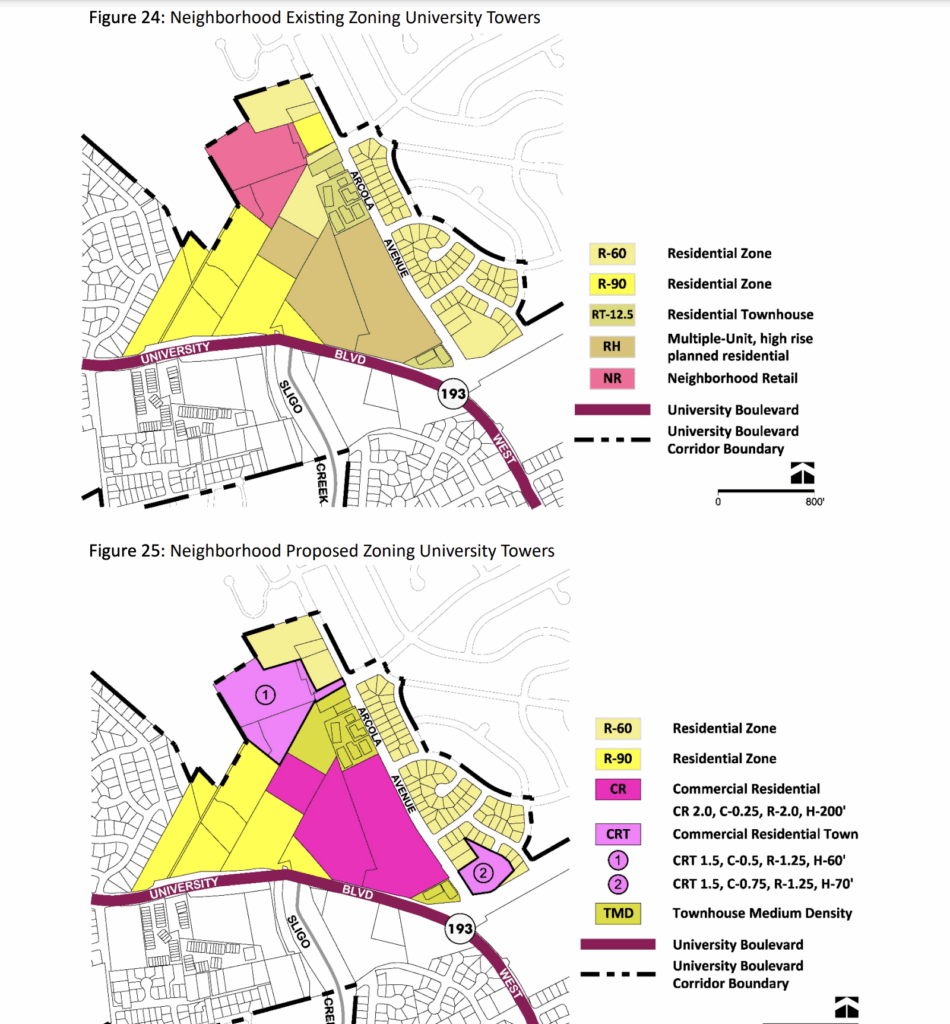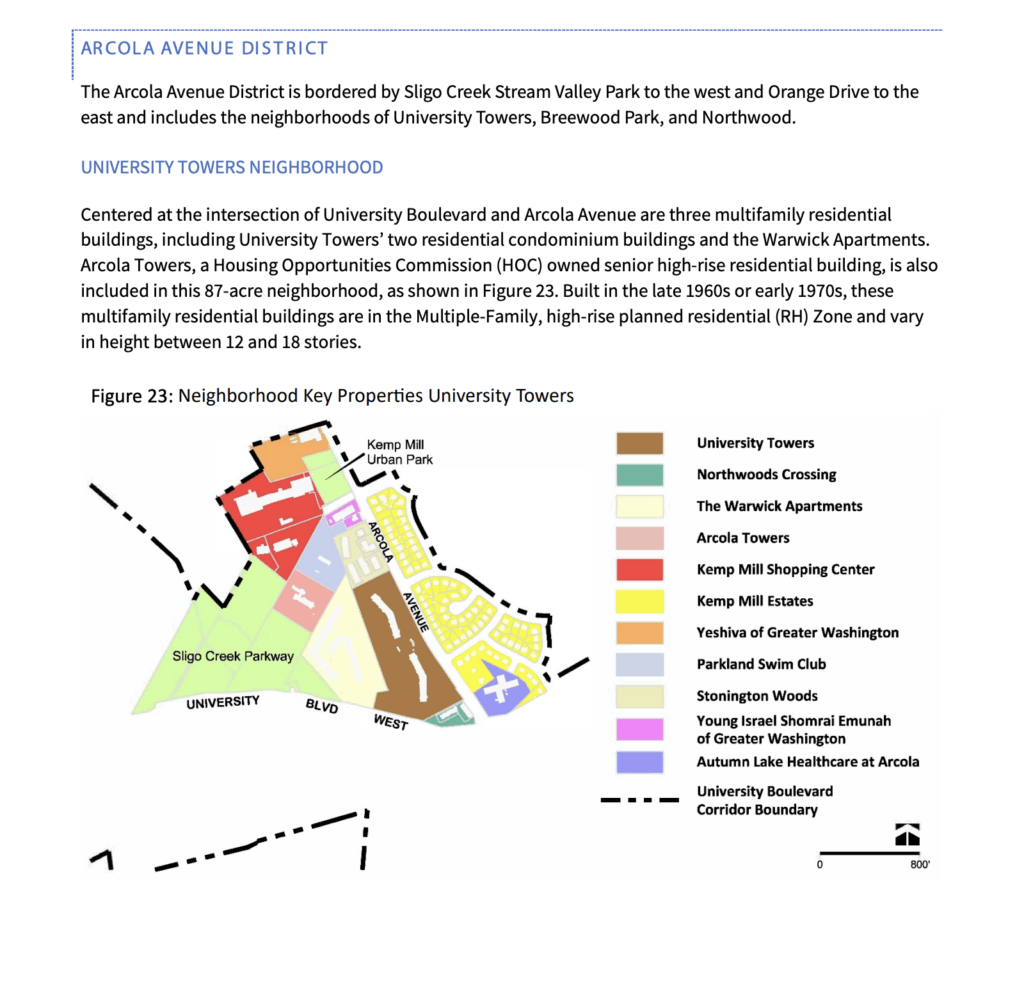Authored by Rabbi Gedalia Walls The University Boulevard Corridor Plan in Montgomery County is a major undertaking focused on revitalizing a key thoroughfare and the areas surrounding it, with a notable impact on the Kemp Mill neighborhood. This project seeks to introduce significant changes, including expanding residential opportunities and improving transportation networks. The University Blvd. Project Overview The University Boulevard Corridor Plan is a long-term vision for approximately 3.5 miles of University Boulevard (MD 193) stretching between the Capital Beltway (I-495) and Amherst Avenue in Wheaton. Driven by the county’s Thrive Montgomery 2050 framework, the plan aims to transform the boulevard into a more accessible, pedestrian-friendly, and multimodal corridor. For the Kemp Mill area, which falls within this corridor, the plan proposes strategies for focused growth and development that can bring a greater mix of land uses and housing options.

Residential Expansion and Use of MPDUs A significant aspect of the plan is the goal of increasing residential density along the corridor. This involves encouraging infill development and redevelopment of properties, including existing commercial centers and some parcels currently with single-family homes, through proposed zoning changes. The intention is to create a wider variety of housing types to meet diverse needs. The project incorporates Montgomery County’s commitment to affordable housing through the Moderately Pricately Dwelling Unit (MPDU) program and related initiatives like workforce housing. While the plan establishes the land use framework, the implementation of affordable units is guided by county-wide regulations. Proposed zoning text amendments associated with the corridor plan encourage or require that a percentage of units in new developments be designated as affordable. Specifically, recommendations include the requirement for 15% workforce housing units in certain new residential projects, ensuring that the expansion of housing stock includes options for low- and moderate-income households. 

Source: montgomeryplanningboard.org
Improved Walking Accessibility to Local Synagogues The University Boulevard Corridor Plan’s emphasis on creating a more walkable environment is particularly relevant to the Orthodox Jewish community in Kemp Mill, for whom walking to local synagogues, especially on the Sabbath and holidays, is central to their religious practice. The plan’s recommendations for wider sidewalks, enhanced streetscaping, improved lighting, and safer pedestrian crossings along University Boulevard and intersecting streets are designed to make walking safer and more comfortable for all residents. For the Orthodox Jewish community, these pedestrian improvements directly enhance accessibility to the numerous synagogues located within the Kemp Mill neighborhood. By improving the walking infrastructure on the main thoroughfare and potentially on connecting streets as part of redevelopment, the plan facilitates easier and safer foot traffic to and from these important community institutions. Community input during the planning process has highlighted the significance of walkability for this population, and the plan’s focus on pedestrian connectivity addresses this need. Connectivity Across Sligo Creek Park Connecting the areas on either side of Sligo Creek Park within the Kemp Mill neighborhood is another important consideration. The University Boulevard Corridor Plan addresses this by focusing on improving pedestrian and bicycle connectivity and enhancing access to the existing park and trail network, notably the Sligo Creek Trail. The plan does not propose the construction of new vehicular roads directly bridging Sligo Creek Park to connect the two sides of the neighborhood. Instead, the focus is on improving the ease and safety of non-vehicular travel. This includes enhancing existing access points to the park, improving pathways leading into and through the park from the corridor, and ensuring that pedestrian and bicycle facilities along University Boulevard and in redeveloping areas integrate well with the park’s trail system. The goal is to make it more convenient for residents to walk or bike between the different parts of the neighborhood using the existing park as a connective greenway, rather than bisecting it with new road infrastructure. Also: the Moderately Priced Dwelling Unit (MPDU) component of the University Boulevard Corridor Plan has the potential to benefit members of the Orthodox Jewish community in Kemp Mill who qualify based on income. Prospective Benefits * Increased Affordable Housing Options: The MPDU program is specifically designed to create housing opportunities for low- and moderate-income households. By requiring or encouraging the inclusion of MPDUs in new residential developments along the corridor, the plan can increase the overall supply of housing that is affordable to individuals and families who meet the program’s income eligibility requirements. * Proximity to Community Institutions: For the Orthodox Jewish community, living within walking distance of synagogues, Jewish schools, kosher markets, and other community resources is often essential for religious observance, particularly on the Sabbath and holidays when driving is prohibited. Housing affordability can be a significant challenge in areas with established religious infrastructure. * Facilitating Religious Life: If MPDUs are developed within or in close proximity to the core areas of the Kemp Mill neighborhood where these Jewish institutions are located, they offer a crucial opportunity for eligible Orthodox families to live in a location that supports their religious practices and community engagement. Without affordable options nearby, some families might be priced out of the neighborhood, making it difficult to fully participate in community life and observe religious requirements centered around walkability. Therefore, for those members of the Orthodox Jewish community in Kemp Mill who qualify for the program, the MPDU component of the University Boulevard Corridor Plan provides a concrete mechanism to access housing within walking distance of their essential religious and community facilities, directly benefiting their ability to practice their faith and be part of the local community. — — — Rabbi Gedalia Walls is a distinguished dayan and posek, widely respected for making Torah learning and halachic clarity accessible to Jews around the world. With over fifteen years of experience in gittin, giyur, and complex halachic litigation, Rabbi Walls has served in key roles connected to Washington, D.C.’s top government-level resolutions. In addition to his rabbinic work, Rabbi Walls is a recognized health and wellness expert. He welcomes inquiries and can be reached at gedaliawalls@gmail.com.











![FLATBUSH: Jewish Yeshiva Bus Vandalized Over Rosh Hashanah [PHOTOS]](https://wjmag.com/wp-content/uploads/2024/10/IMG-20241006-WA0129-1536x864-1-120x86.jpg)

Agree or disagree?